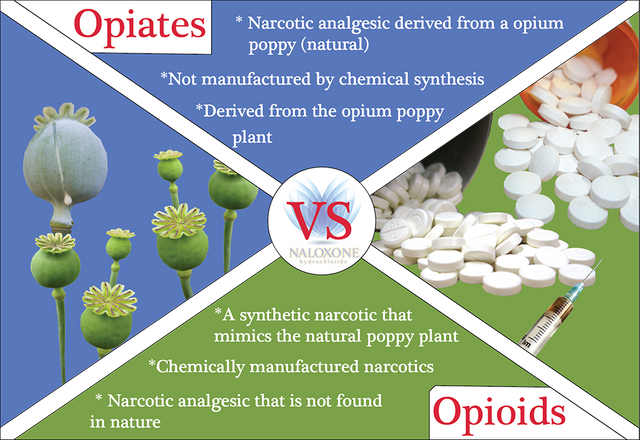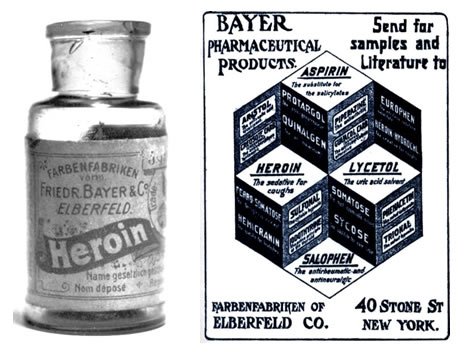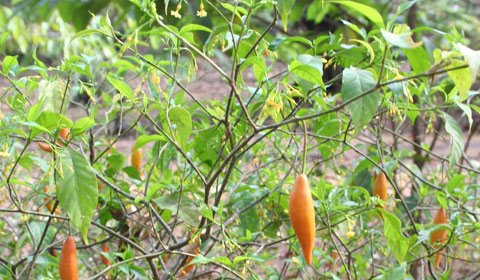As Pharmacies Become Dealers, Hallucinogens Become Healers- Ibogaine
The Problem
To most Americans, drugs like heroin do not enter the conscious mind much; it is a problem far away from them. However, the reality is there is an epidemic in this country, and heroin is claiming more users, and more lives, daily. Most people do not awaken one morning with the thought of using heroin. Gateway drugs have always been a debated issue in this country, whether or not a drug like marijuana opens the door for people to do harder and more dangerous drugs. Today I tell you, marijuana is not the gateway to heroin. It may be a gateway to drugs in general, and it usually is the first drug a user ever tries; these are all valid points. However, the culprit in America’s increasing dependence on heroin, are other opioids, drugs like Morphine, Oxycodone, Percocet, and Vicodin, drugs that our medical system has freely given out as if they were candy. It is crucial to understand that nothing compares to heroin in its sheer ferocity, power, and addictiveness. However, these prescription drugs all aim to emulate it in a “safer” and more controlled manner.

- An estimated 13.5 million people in the world take opioids (opium-like substances), including 9.2 million who use heroin.
- In 2007, 93% of the world’s opium supply came from Afghanistan. (Opium is the raw material for heroin supply.) Its total export value was about $4 billion, of which almost three quarters went to traffickers. About a quarter went to Afghan opium farmers.
- The 2007 National Survey on Drug Use and Health reported 153,000 current heroin users in the US in 2007. Other estimates give figures as high as 900,000.
- Opiates, mainly heroin, were involved in four of every five drug-related deaths in Europe, according to a 2008 report from the European Monitoring Center on Drugs and Drug Addiction.
- Opiates, mainly heroin, account for 18% of the admissions for drug and alcohol treatment in the US.
Opiates and Opioids
An opiate is a chemical or drug that is derived from the opium sap of the poppy plant; these include morphine and heroin. They have analgesic properties by their ability to bind to the μ-opioid receptors (MOR). Opioids however, are drugs with the ability to be synthesized in a lab, without the need for the poppy plant; drugs that so similarly mimic the chemical structure of the base opiate, morphine, that the brain sees them as no different. They are able to bind to MORs just as tightly, and in some cases, even more tightly, than opiates derived from the poppy plant. Opioids include Percocet, Oxycodone, Vicodin, OxyContin, Hydrocodone, and many more that can be synthesized infinitely. This ability to synthesize them allows for manipulation of their strength (their affinity to the μ-opioid receptors), as well as their half-life. This is why some synthetic opioids like methadone, are immensely more longer acting than their opiate counterparts. A methadone dependent patient would need to detox and go through withdrawal symptoms, for at least three times as long as a heroin user who did not try methadone treatment.

From: http://www.naloxone-hydrochloride.com/mdlblog/Opioids-vs-Opiates/
History of Opium
Throughout ancient history opium was chewed for its healing and spiritual properties. It can first be seen in Ancient Egypt as early as 1300BC. Through traders and conquerors, like Alexander the Great, the poppy seed was spread throughout most of the known world. China received the plant through this trading, and began to see its valuable properties instantly. It was not until the 1700s that China began its own addiction problem to opiates with the British trading opium and poppy seeds to them by the barrel, in order to secure more of the Chinese tea that they had become so accustomed to. During this spike in availability, people began looking for new ways to ingest the drug; the Chinese found that by inserting the sappy gunk into their large tobacco pipes, the desired affects were almost instantaneous, especially in comparison to chewing it. In 1803, Friedrich Serturner, a German scientist was able to find the key alkaloid in opium that gave it its medicinal, as well as euphoric properties; he was the first ever to synthesize morphine in its pure form. “The medical community declared that opium had been "tamed." Morphine’s reliability, long-lasting effects, and safety were extolled. In fact, despite its potential for addiction, morphine is still the premier drug used for intense pain management in hospitals and for end-of-life care.”
If you'd like to learn more about how this all developed, from the chewing of opium in ancient times, to the opium wars between China and Britain, and finally to the development of morphine and pharmaceutical grade narcotics, the video below from the history channel, is very informative (Along with its part 2 and 3).
The birth of Heroin 
Countries who were in the midst of this trade, like China, soon saw the debilitating effects of opium and its addictive properties; China immediately began banning its trade, which unfortunately led to multiple wars with the British. Morphine was no different; countries began to suffer from its grip, to the point that Serturner’s own wife was found dead of an overdose. Distraught and confused, he warned the world of the dangers of such a powerfully refined drug, and wished he had never stumbled upon it in the first place. Such incidence led to increased research on other ways this drug could be used safely and without leading to dependence. Heroin, or Diacetylmorphine was born of this frantic search. First synthesized in 1874 by English researcher, C.R. Wright, the drug went unstudied and unused until 1895 when Heinrich Dreser, who working for The Bayer Company of Germany, found that diluting morphine with acetyls produced a drug without the common morphine side effects. Heroin was considered a highly effective medication for coughs, chest pains, and the discomfort of tuberculosis, due to its properties as a CNS (Central Nervous System) depressant, which allowed for slower and less painful breathing. This effect was important because pneumonia and tuberculosis were the two leading causes of death at that time, as this was prior to the discovery of antibiotics. Heroin was touted to doctors as stronger than morphine, and safer than codeine. It was thought to be non-addictive, and even thought to be a cure for morphine addiction or for relieving morphine withdrawal symptoms. Because of its supposed great potential, Dreser derived his name for the new drug from the German word for ‘heroic’. Heroin seeped into the American bloodstream, literally, in such a rapid way with the introduction of the hypodermic needle. The misconception that addiction happened when drugs were metabolized by the liver aided this false pretense that by injecting the drugs into the blood directly, addiction would be avoided. Clearly that would not be the case, leading to the outright ban on heroin in the US in 1905. This ban on outright use of heroin led companies to infuse it and other drugs like morphine into their so called “patent” drugs. Such drugs were sometimes 75% opiates, however, could be sold legally in catalogs and ordered anywhere in the US without prescription. Two years later the FDA passed the pure food and drug act, forcing companies to clearly label their patent medicines with all the ingredients. This as well as the hefty tax for a doctor to register to legally prescribe narcotics such as heroin and cocaine, helped curb the epidemic.
Opioids Today
Today the epidemic is at a rise, at rates this country as never seen before. The legal use of synthetic opioids has issued in the new wave of addicts, those who may never even have used the drugs for pleasure, only for medicinal purposes. Once a patient is addicted physically to these opiate drugs, it is only a matter of time before they run out, and their doctor refuses them anymore. The withdrawal symptoms are so intense and debilitating that most end up buying them at a much higher price in the underground market, just to ensure that they can function normally for one more day. When the price becomes too high for their means, people are then left with a choice, endure the withdrawals, or buy heroin, a more potent, and much cheaper form that will allow them to continue living under the radar. This trend has become all too familiar in the US, and DEA laws restricting the number of narcotic pills prescribed do not solve the root problem, they intensify it by forcing more opioid dependent patients to make that choice. Today there are two federally sanctioned drugs used for the treatment of opiate addiction and its acute withdrawal symptoms- methadone and suboxone. These drugs are partial opioids, also synthetic in nature, that bind to the same receptors as their full opiate counterparts, alleviating any withdrawal and cravings for the drug. These medications, though a lifeline for many addicts, do not in any way “cure” most addicts. Many addicts though on these drugs, still find themselves doing the same addictive behaviors they once did, and even finding means to abuse the treatment drugs themselves to gain a high. In contemporary history, there has been much progress in hallucinogens and psychedelics as a possible cure, one that treats the underlying cause of the addiction. The term “cure” is taboo when referring to addiction treatment, as it is definitely a chronic illness, one that the brain will be susceptible to for the rest of the patient’s life. Even after getting clean using drugs like methadone, suboxone, or going cold –turkey, it is crucial for one to understand the addiction is still locked in their mind, it will never just disappear, the feelings, and emotional memories cannot simply be erased from the person’s reward circuitry. I like to compare it to a cancer patient or a diabetic; a cancer patient can go into remission, however, the cancer is still present, and can spike up at any moment. Similarly, a diabetic can control their diabetes using insulin, however, it is only being controlled, and not cured. The addict can and will get clean if they want to, and they will go into recovery similar to remission, however, all it takes is one use and they will become a full-blown addict again, and probably worse than before.
Iboga 
These facts, though gloomy, are important when judging the value of a treatment drug, like ibogaine. Ibogaine is an isolated active alkaloid from the root bark of the central West African shrub Tabernanthe Iboga. It has been used for thousands of years for spiritual development and as a rite of passage into adulthood. It is not just a chemical substitute used to wean the addict off of opiates, but in reality, a psycho-active drug that invokes a multi-day experience, one that is mental, physical, and spiritual. Such an experience is said to change the addict from within, and most will immediately report no cravings, thoughts, or recurring dreams of using ever again; such bold claims and testimonials are revolutionary in the field of addiction therapy. Like today’s maintenance drugs, suboxone and methadone, Ibogaine is able to make withdrawal subside. The properties in treatment that allow it to stop the physical opiate withdrawal were unknown until the late 1960's. Since that time, studies undertaken by leading research and academic facilities have shown that Ibogaine is an effective addiction interrupter for most substances including heroin, methadone, methamphetamine, cocaine, alcohol, and nicotine. Ibogaine alleviates physical withdrawal symptoms of opiate detoxification by resetting and refreshing the opiate receptor sites. How this is done is still not fully understood; no other known substance has shown this method of action.
As earlier discussed, all other treatment methods involve synthetic chemicals that bind to those receptors, which are actually extending the addiction in a sense, but allowing for the addict to be weaned of them, and all opiates, in a controlled manner. However, in reality they are still just postponing the withdrawal, and allowing it to happen in a slightly less intense, and prolonged fashion. With Ibogaine, once the initial process is complete, no further use is necessary; Ibogaine is non-addictive and doesn't need to be taken on a continuing basis. While it’s psychoactive properties are in work, it also treats the physical chemical dependencies by cleansing the body of the drugs, and resetting the brain's neuro-chemistry. It appears and feels as if the memory of dependency is removed from the mind and body.
Ibogaine also works to rebalance the neurotransmitter levels of dopamine, serotonin, endorphins, adrenaline etc. to their pre-addicted state. This helps the individual to feel better much more quickly, especially compared to quitting a substance cold turkey which can take weeks or even months to regain complete balance in neurotransmitter levels after discontinued use. Those coming off anti-depressants may also go through this experience. There is still a lot of physiological recovery needed to really become balanced, and Ibogaine therapy is most effective when combined with the initiation of a healthy lifestyle, but as far as cravings and chemical dependency, the change occurs rather quickly.
After ingestion, Ibogaine is converted by the liver into nor-Ibogaine, which stores in the fat cells of the body. As it is slowly released into the bloodstream, a psychedelic and fairly hallucinogenic experience insures. This is the true healer; it curbs the cravings and takes away the thoughts for using, while putting the patient into a trance like state, as they visualize their addiction, in its various forms. The experience can last 48 to 72 hours, and can be quite intense. However, it is well documented that the experience has strong anti-depressive effect that establishes a state of well-being, free from negative thought patterns, like the ones that enabled the drug use in the first place.
I hope this was informative, especially being that it is my first ever post on steemit. I hope to write more about this topic as well as others in the psychological, neurological, and addiction therapy fields. Your feedback will only help me write better in the future.
@thefeetofpete
Great effort put up here!
Keep sharing.